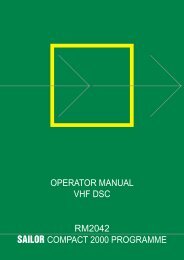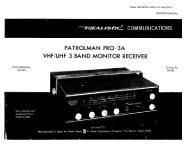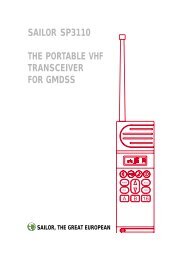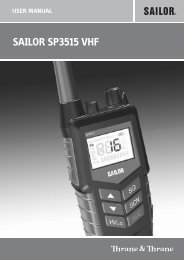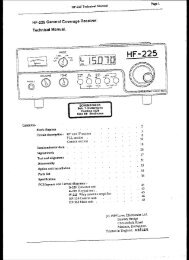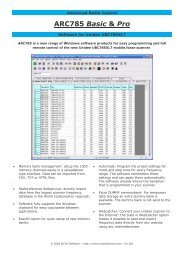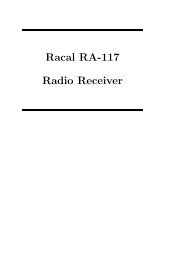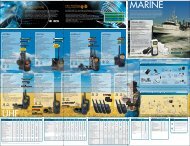MFJ-8100K Manual
MFJ-8100K Manual
MFJ-8100K Manual
You also want an ePaper? Increase the reach of your titles
YUMPU automatically turns print PDFs into web optimized ePapers that Google loves.
The primary purpose of this tuning range is to make it very easy for you to listen to ham<br />
radio stations at night on what is known as the 80/75 Meter band. From 3.5 to 3.8 MHz,<br />
you'll hear mostly Morse Code signals. From 3.8 to 4.0 MHz, you will hear SSB voice<br />
conversations from all around the nation. You'll hear both sides of most conversations.<br />
You may hear occasional shortwave broadcasts mixed in among the hams in the 3.9 to 4.0<br />
MHz region and possibly in the 90 Meter band, 3.2 to 3.4 MHz.<br />
Range B: 5.85 to 7.40 MHz.<br />
The main purpose of this tuning range is to give you lots of strong shortwave broadcasts<br />
in late afternoon and throughout the night on the 49 meter band, 5.95 to 6.2 MHz. The 40<br />
meter ham radio band is 7.0 to 7.3 MHz, and you will also hear foreign broadcasts among<br />
the ham CW and SSB signals.<br />
Range C: 9.5 to 12.00 MHz.<br />
This band lets you tune all of the popular 31 meter broadcast band, 9.5 to 9.9 MHz. You<br />
can also find the WWV time standard signal at 10.0 MHz (or on Band D at 15.0 MHz.)<br />
The 30 meter ham band (CW and RTTY only in the USA) is at 10.1 to 10.15 MHz. This<br />
tuning range is generally busy 24 hours a day.<br />
Range D: 13.2 to 16.4 MHz.<br />
On the 20 Meter ham band (14.0 to 14.35 MHz), you can hear strong CW and SSB voice<br />
signals from around the world throughout the day and well into the evening. This is the<br />
most active and crowded of the international ham radio bands. You also are able to tune<br />
the 21 Meter shortwave broadcast band (13.6 to 13.8 MHz), and all of the 19 Meter band<br />
(15.1 to 15.6 MHz). Station WWV at 15.0 MHz provides precision time and frequency<br />
information. The 19 Meter band is very good in the morning hours of winter and the late<br />
afternoon hours of summer.<br />
Range E: 17.5 to 22 MHz.<br />
This tuning range is provided to assure good listening variety during daylight hours. It<br />
includes the 16 Meter broadcasting band (17.55 to 17.9 MHz), the 17 Meter ham band<br />
(18.068 to 18.168 MHz, and the 15 Meter ham band (21.0 to 21.45 MHz). Station WWV<br />
also broadcasts on 20 MHz.<br />
Shortwave Listening in General<br />
In addition to the specific "bands'' highlighted above, you'll hear thousands of other<br />
shortwave signals. Many will be military or government Morse code transmissions, plus<br />
very "odd'' noises of weather FAX, wire service and other data transmissions. You can<br />
also hear government or military SSB voice transmissions and even an occasional<br />
unlicensed "pirate'' station.<br />
A rule of thumb is that the lower frequency ranges (A, B, C) are most active during the<br />
late afternoon, evening and through the night. The higher frequencies (D and E) generally<br />
are most active during daylight hours.<br />
33




